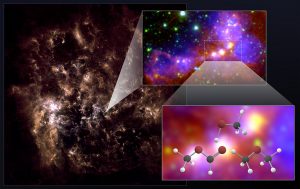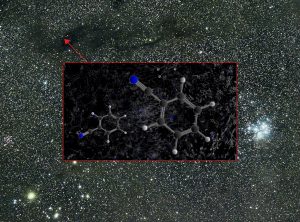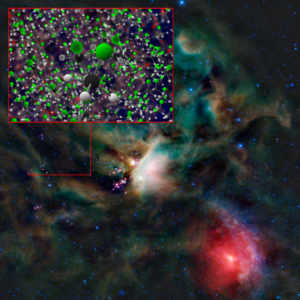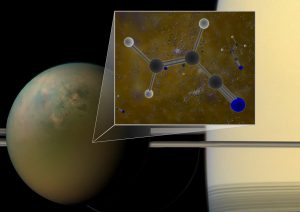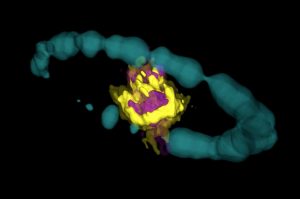New data from ALMA and other telescopes reveal stunning web of filaments in the Orion Nebula.
Stellar Embryos in Nearby Dwarf Galaxy Contain Surprisingly Complex Organic Molecules
Astronomers using ALMA have conclusively detected the largest, most complex molecules ever observed outside the Milky Way.
GBT Detection Unlocks Exploration of ‘Aromatic’ Interstellar Chemistry
Astronomers using the GBT have made the first definitive interstellar detection of benzonitrile, an intriguing organic molecule.
Astronomers Discover Traces of Methyl Chloride around Infant Stars and Nearby Comet
ALMA and the Rosetta spacecraft have each detected methyl chloride in space. This intriguing molecule may have interesting astrobiology implications.
ALMA Confirms Complex Chemistry in Titan’s Atmosphere
Saturn’s frigid moon Titan has a curious atmosphere. In addition to a hazy mixture of nitrogen and hydrocarbons, like methane and ethane, Titan’s atmosphere also contains an array of more complex organic molecules, including vinyl cyanide, which astronomers recently uncovered in archival ALMA data. Under the right conditions, like those found on the surface of Titan, vinyl cyanide may naturally coalesce into microscopic spheres resembling cell membranes.
Heart of an Exploded Star Observed in 3-D
Deep inside the remains of an exploded star lies a twisted knot of newly minted molecules and dust. Using ALMA, astronomers mapped the location of these new molecules to create a high-resolution 3-D image of this “dust factory,” providing new insights into the relationship between a young supernova remnant and its galaxy.







